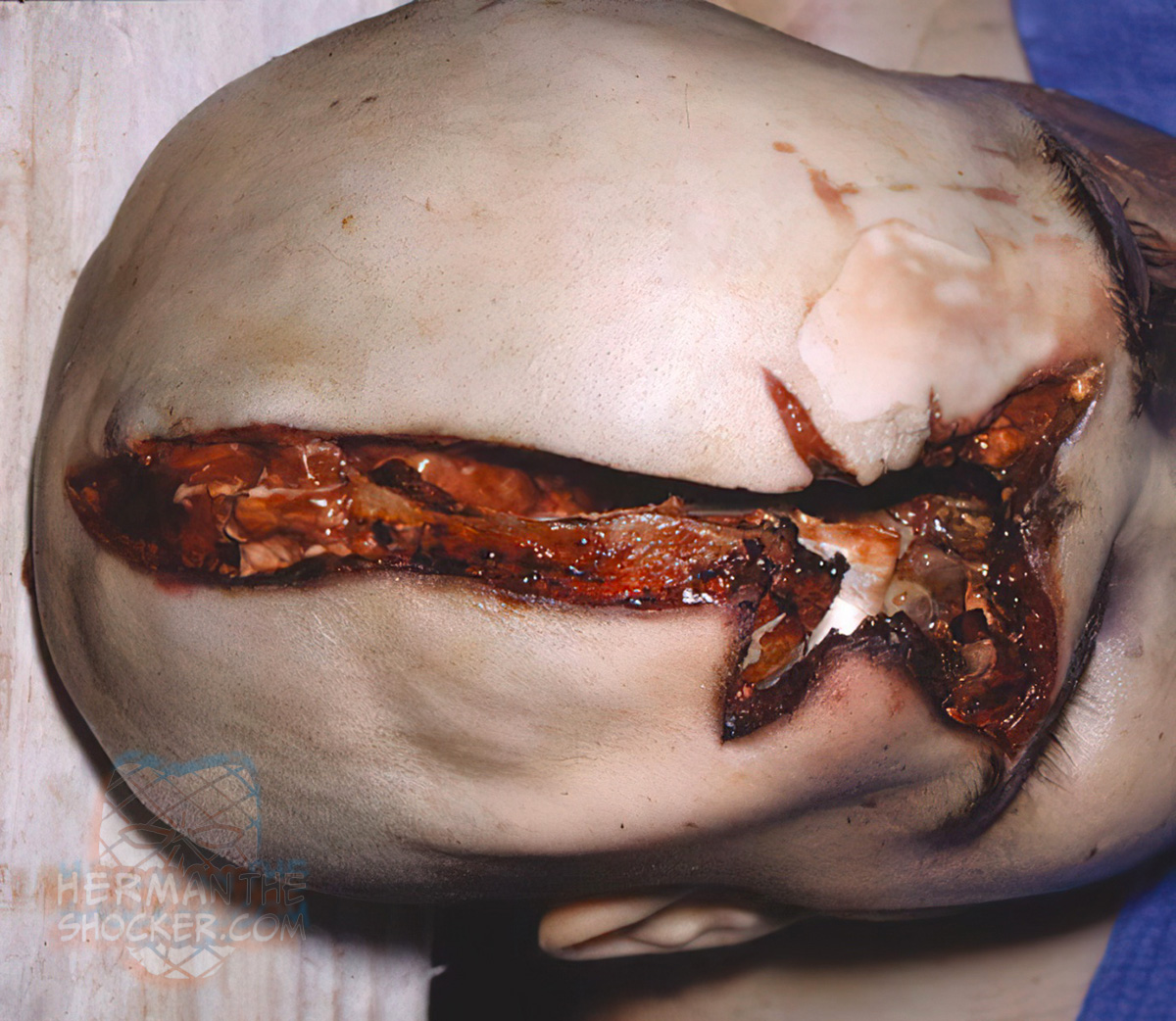The premise that exit wounds are larger than entrance wounds is a generality only. A man was found in early decomposition on his bed with a rifle next to his body. A gaping stellate wound on the right side of the forehead extended posteriorly to the right parietal region (Fig.1). A smaller stellate wound was on the occipitoparietal region (Fig.2).
Examination of the right forehead wound disclosed central blackening of the wound edges, consistent with a contact wound. Examination of the calvarium disclosed external beveling of the edges of the skull wound deep to the occipitoparietal scalp wound, confirming that the posterior, smaller wound was the exit. Skull wounds may be comminuted and, as such, require reapproximation of the bony fragments to allow confirmation of the nature of the beveling.
In a contact shot fired anywhere on the head, the gases from the firing discharge can enter into the skull. This results in an acute build-up of intracranial pressure with the rigid cranium attempting to accommodate it by expansion. Gases under pressure accumulate inside the cranium and in the process of attempting to release this build-up of pressure, fractures will arise with outward expansion with outwards pushing of the fracture fragments and consent tears (lacerations) through the skin of the face as these sharp and tough bony fragments are pushed outwards. This is seen especially on the face and this produces facial distortion effects.
Latest posts







 US ☎︎ 988 or 1-800-273-TALK (8255)
US ☎︎ 988 or 1-800-273-TALK (8255) CA ☎︎ 1-833-456-4566
CA ☎︎ 1-833-456-4566 UK ☎︎ 0800-689-5652
UK ☎︎ 0800-689-5652 AUS ☎︎ 13-11-14 or 1300-659-467
AUS ☎︎ 13-11-14 or 1300-659-467 ROK ☎︎ 1393
ROK ☎︎ 1393 DE ☎︎ 0800-111-0-111
DE ☎︎ 0800-111-0-111 ES ☎︎ 024
ES ☎︎ 024




